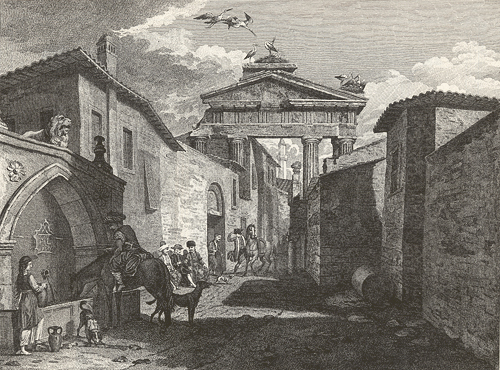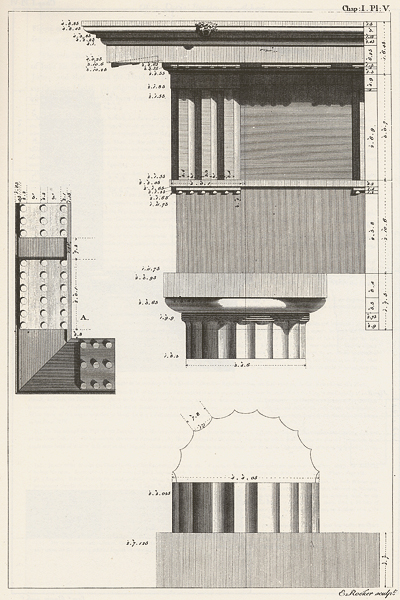
The inscription on the architrave indicates that this monumental gateway to the Roman Agora was dedicated by the people to Athena Archegetis (the Leader) and constructed with donations from Julius Caesar and later from Augustus. The marble propylon, which was built sometime in the archonship of Nicias (11-9 BC), stands at the western entrance to the commercial marketplace, a large peristyle court with unfluted Ionic columns that sheltered a row of shops along the eastern side, where there was similar but smaller gateway next to the Temple of the Winds. The view above shows a spur wall behind one of the corner column terminating in an anta.

Here, in Stuart's scenic depiction, storks are nested on the acroteria of the pediment, the acroterion at the apex once having supported a statue of Lucius Caesar (the grandson of Augustus), as indicated by the inscription on the base. Workshops and houses clutter the scene; the doorway is that of the French consul, who rebuilt the fountain in the foreground. After Greek independence, many of these older Byzantine buildings were torn down (faciliteated by a major fire in 1884), and in 1890 a series of systematic archaeological excavations undertaken. The marketplace was found to be 111 meters long and 98 meters wide and, surprisingly, the Gate of Athena Archegetis not to be on axis.

Four Doric columns grace the portico, which represents that Order in Stuart's book. Here the capital and entablature are depicted.
References: "The Tower of the Winds and the Roman Market-Place" (1943) by Henry S. Robinson, American Journal of Archaeology, 47(3), 291-305; Pictorial Dictionary of Ancient Athens (1971) by John Travlos; The Antiquities of Athens: Measured and Delineated by James Stuart and Nicholas Revett, Painters and Architects (1762-1816/2007) introduction by Frank Salmon.